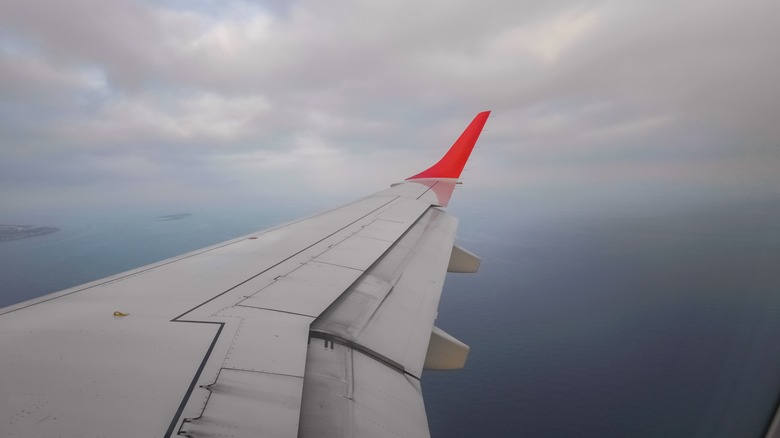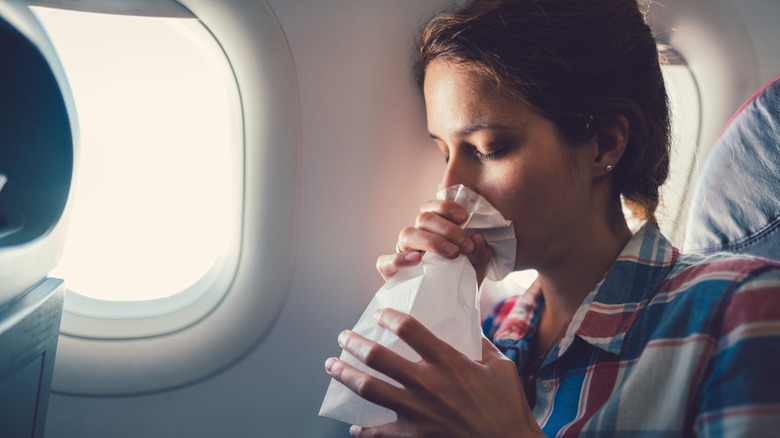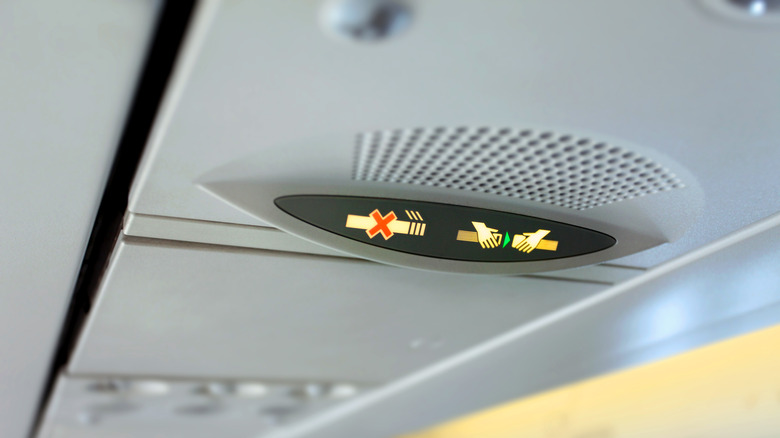The Scary Reason Flights Keep Feeling Bumpier And Bumpier
In the last few years, flights have become pretty bumpy. Frequent and less active fliers alike may have noticed that turbulence has grown more common during flights than in the past. Jostling flight attendants back to their jump seats or scurrying passengers away from the bathrooms, turbulence can be alarming — especially given its increasing frequency and severity. That means more potential for injury, nervous flying, and even missing out on in-flight food and beverage service.
Professor of atmospheric science at the University of Reading Paul Williams told CNN that, based on his research, turbulence appears to have gotten worse. "We ran some computer simulations and found that severe turbulence could double or triple in the coming decades," he advised the outlet. In addition to added severity, the amount of time fliers will experience turbulence will likely also go up. "Typically, on a transatlantic flight, you might expect 10 minutes of turbulence," Williams added. "I think that in a few decades this may increase to 20 minutes or to half an hour. The seat belt sign will be switched on a lot more, unfortunately for passengers."
Although you can remind yourself that turbulence rarely causes plane crashes or turn to a turbulence anxiety app to help alleviate your fears, the uptick in turbulence may still frighten you. What has caused this trend? And can humans do anything to stop it?
Climate change has led to more turbulence
Just as climate change can cause boost the strength of major storms like hurricanes, researches believe it is having a similar effect on air turbulence. Specifically, it has produced an uptick in a dangerous kind of turbulence known as clear-air turbulence. Because this variety seemingly comes out of nowhere, unlike the type spawned by storms, airlines struggle to prepare for it. These unpredictable turbulence patterns may stem from the increasingly warmer air — a result of climate change.
Passengers will need to buckle up (literally) for these more frequent turbulence activities, but airlines will, too. "Airlines will need to start thinking about how they will manage the increased turbulence, as it costs the industry $150 to $500 million annually in the United States alone," Mark Prosser, a meteorologist who led a study on turbulence at the University of Reading, told Forbes. "Every additional minute spent traveling through turbulence increases wear-and-tear on the aircraft, as well as the risk of injuries to passengers and flight attendants."
The University of Reading study indicated a rise in all three kinds of turbulence from 1979 to 2020. That research indicates that light turbulence increased by 17%, moderate turbulence went up by 37%, and severe turbulence shot up by 55% in that 41-year span. If you're a nervous flier, you may want to try booking your next flight during the best time to avoid turbulence.
What can passengers do to stay safe?
You should always listen for announcements from the flight crew and take the precautions they recommend, especially given the unpredictable nature of clear-air turbulence. No matter the circumstances, you can increase your chances of staying safe on a plane by remaining buckled into your seat, regardless of the status of the fasten seatbelt sign.
"Unless you're strapped in, if the aeroplane goes down, you're going to go upwards," Terry Tozer, a pilot of 20 years, told the Daily Mail. "So the secret is keeping your belt done up." He added that he always uses his own seatbelt. If getting sick during potential turbulence concerns you, Tozer recommended that passengers select seats in the middle of the plane. Turbulence has a more minimal impact on the center of the aircraft, as it gets jostled around less, even in rough winds.
To further increase your safety during turbulence, make sure you tuck away all the belongings you brought onboard. Keep personal items fully underneath the seat in front of you or secured in the overhead bin. That list includes anything you have out, like your laptop, which can easily get hurled into someone during severe turbulence. If you get up during the flight to remove an object from the bin, firmly shut it so that it doesn't pop back open due to unexpected turbulence.


